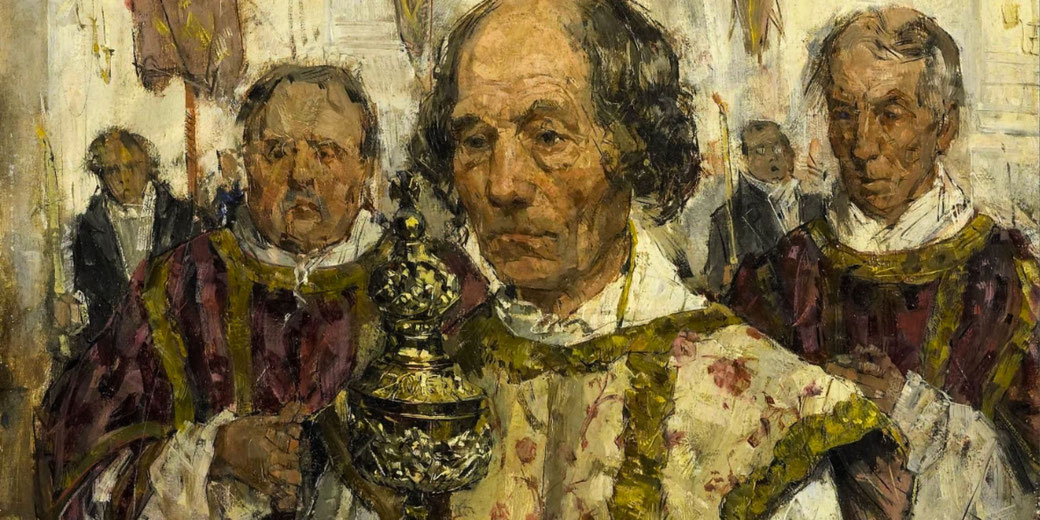How people hid Catholic priests to save their lives in Elizabethan England

The walls held secrets that could have cost lives. During the height of religious turmoil in England, Catholic priests were hunted, and their very existence threatened.
Skilled craftsmen built priest holes to hide these hunted priests in manor houses and castles across the country in order to create a temporary shelter.
Often small and cramped, priest holes displayed clever designs with hidden entrances, false walls, and secret passages that allowed priests to evade capture.
Why the lives of Catholic priests were in danger
The Protestant Reformation began in 1517, which led to major changes across Europe.
England broke away from the Roman Catholic Church in 1534 under Henry VIII’s reign.
This separation started the Church of England and led to a series of conflicts and punishments.
When Catholic practices were banned, those who stayed loyal faced harsh punishment.
During Elizabeth I’s reign, tensions worsened after Pope Pius V issued the papal bull Regnans in Excelsis in 1570, which excommunicated Elizabeth I and called on Catholics to reject her authority.
Anti‑Catholic feeling grew stronger when the 1581 Act of Persuasions (officially called 'An Act to Retain the Queen's Majesty's Subjects in their Due Obedience') imposed steep fines on Catholics who refused to attend Anglican services.
By 1585, authorities hunted priests as threats to the state under the following Act Against Jesuits and Seminary Priests, which made it high treason for a Catholic priest to be in England.
Consequently, priests lived in constant fear of discovery and execution. This led to the creation of priest holes as a necessary means of survival.
In many homes, these hiding places became essential as nobles who remained loyal to Catholicism provided shelter to priests.
Harsh penalties awaited those who harboured priests, including fines and imprisonment with the possibility of execution.
Priest hunters, like the well‑known Richard Topcliffe, used brutal methods and interrogations to uncover hiding places.

What were ‘priest holes’?
Priest holes needed careful planning and expert craftsmanship. Nicholas Owen was a Jesuit lay brother who became renowned for his skill in creating these hidden spaces.
He used his talents as a carpenter and mason to design clever hiding places using hidden entrances and false walls that were difficult to discover.
Some priest holes were hidden beneath floorboards or behind paneling, allowing a priest to remain unseen for days, even during a thorough search.
In manor houses, secret chambers were often built into attics or chimneys, which provided an additional layer of protection.
In some cases, priest holes included ventilation shafts to provide air, which allowed the occupant to survive long periods in confinement.
Without these features, the risk of suffocation was high. Certain designs also included narrow passages connecting different hiding places.
In addition to their practical aspects, priest holes needed a lot of secrecy during construction, and only a trusted few knew their locations and details.
What are some famous examples of priest holes?
One notable example of a priest hole is found at Harvington Hall in Worcestershire, an Elizabethan manor that contains several cleverly concealed hiding places.
Nicholas Owen, the master builder, designed these hideaways in a variety of places including around and under the grand staircase, behind a book cupboard and above a bread oven.
Another example is Sawston Hall in Cambridgeshire, which the devout Catholic Huddleston family owned. A trapdoor under the staircase led to a small chamber.
At Baddesley Clinton in Warwickshire, the loyal Catholic Ferrers family created secret spaces that helped protect priests.
Hidden entrances in the floors and walls provided access to these refuges, allowing priests to hide for long periods during raids.
Hindlip Hall in Worcestershire, owned by Catholic sympathizer Humphrey Pakington, also featured remarkable priest holes.
During the Gunpowder Plot of 1605, conspirators sought shelter here, and despite a lengthy search lasting days, authorities failed to discover all the hiding places.
How effective were they?
Between 1570 and 1681, over 130 priests were martyred in England and many Catholic priests faced execution.
In numerous cases, priest holes provided a temporary sanctuary that saved lives.
In some cases, priests remained hidden for days in cramped conditions, as authorities used brutal methods to uncover priest holes.
Priest hunters used tools like sounding rods to detect hollow spaces.
There are examples of houses with secret rooms that remained undiscovered into the modern age.
For Catholic families, priest holes represented a significant risk, but many families still chose to protect their faith and clergy. Historians estimate that hundreds of lives were saved through their creation.
What do you need help with?
Download ready-to-use digital learning resources
Copyright © History Skills 2014-2025.
Contact via email
With the exception of links to external sites, some historical sources and extracts from specific publications, all content on this website is copyrighted by History Skills. This content may not be copied, republished or redistributed without written permission from the website creator. Please use the Contact page to obtain relevant permission.





